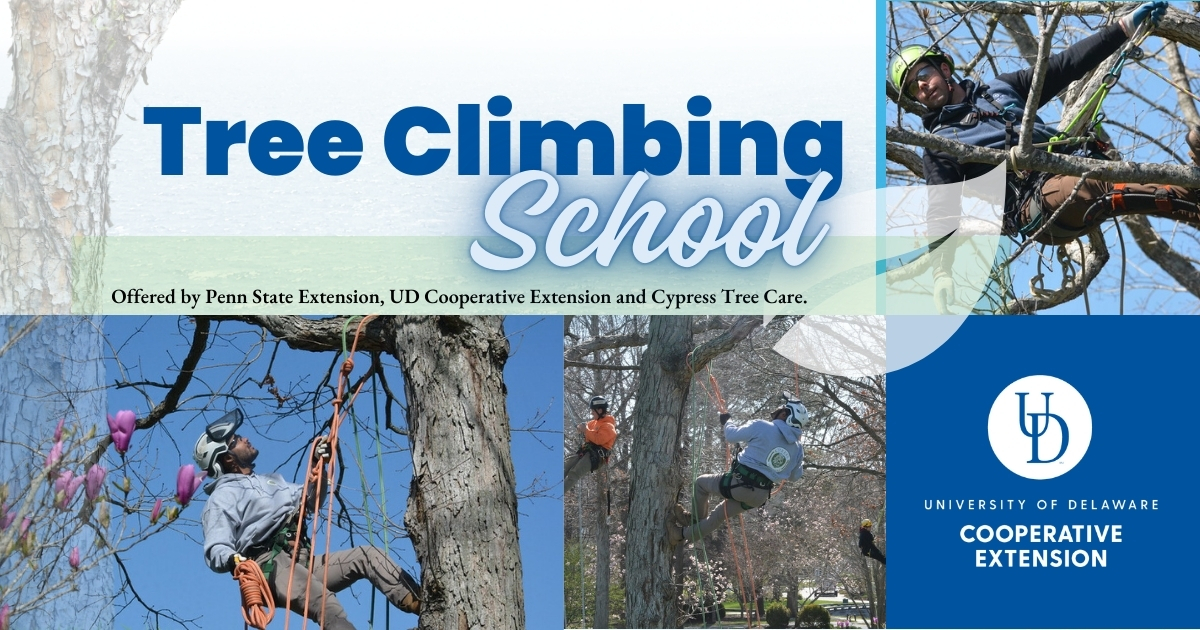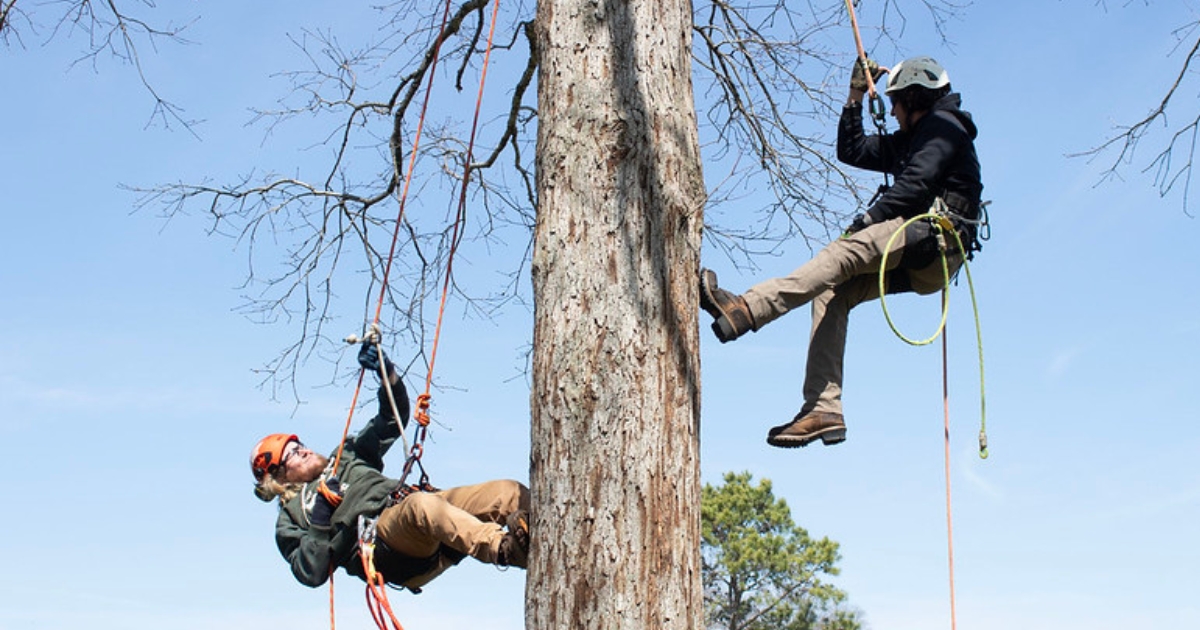
Category: Cooperative Extension

Trapezing Trees
May 16, 2025 Article and Video by Michele Walfred, Photos by Michele Walfred, Jeremy Wayman, Tracy Wootten
When people need a large tree removed or pruned on their property, they often encounter sticker shock. It’s expensive, and therefore tempting, to take on the towering tree task themselves.
Stop. It is not a DIY project. Put away the ladder and call in a pro! Scaling up a towering oak, maple, sycamore, or elm tree and doing so safely, and removing or pruning without incident, is an art form best left to the experts.
To assure a fresh supply of tree talent, Delaware Cooperative Extension, in partnership with the Penn-Del Chapter of the International Society of Arborists (ISA) and Penn State University, held a three-day tree climbing school in Millsboro. Baywood Greens Golf Course and Clubhouse offered their grove of tall oaks as the training location. The trunks of the mature oaks, without any lower branches to gain a foothold, were the perfect specimens to hone the art of tree climbing.
The setting sometimes resembled an outdoor Cirque du Soleil with colorful ropes, helmets, utility vests and dangling bodies contemplating their next move.
Thirteen people signed up for the school's Sussex County location. The course has been offered in the past through New Castle County Extension under the coordination of Carrie Murphy, horticulture extension agent.

Enrollees represented different levels of experience and career fields. Some worked for tree or landscape care companies and wanted a refresher, or, no pun intended, elevated their experience from lawn and shrub care to taller trees. Other climbers worked for nonprofit bird rescue, state parks, and state forestry. A UD medical entomology graduate student who needed to scale taller trees for his insect research also attended the workshop.
Tracy Wootten, horticulture agent for Sussex County, and Blake Moore, extension agent in natural resources, based in Kent County, organized the training on behalf of the University of Delaware Cooperative Extension. Wootten and Moore partnered with Dave Ruyak, executive director of the Penn-Del Chapter of the ISA, who brought along Jim Savage, professor of horticulture at Penn State University, to lead the training and show students the ropes - literally.
Video of Tree Climbing School: youtube.com/watch?v=oBuRpDNzDJk
“We start the day by going over the basics—the knots we are going to use. Many of the people here today have never climbed a tree. Or have done it a couple of times, but don’t have the skill yet,” Ruyak said.
Ruyak said that within a couple of hours, workshop attendees were setting up their own ropes and climbing off the ground into the trees.
The course began with practicing the basics and adding more techniques and tools as student climbers progress.
“On the last day, we say, pick a tree and climb it, and they are confident to do that,” Ruyak remarked.
Calvin Glock, who works for a local landscaping and tree care company, wanted to elevate his skill level. “I have been on the ground for a while and am ready to step up,” he said. “I want to have a family, so I want a career. On the ground, I run chainsaws and ropes. Now I want to get up in the trees.”
The objective in scaling any tall structure, such as a lumbering tree, is to protect the climber and the property owner. “Safety is huge!” Wootten stressed. “This takes a lot of skill and safety; if you don’t have that, bad things can happen.”
Wootten is well aware of consumer reaction toward the cost of tree removal, which takes into account the training and liability insurance.
”People don’t realize how expensive it is to remove or prune it properly,” Wootten said.
More opportunities are branching out. Delaware Extension will continue to offer the course in all three counties to meet the demand due to industry turnover. Wooten said it’s especially important to train newcomers in the profession as people age and retire from it.
With multiple sessions already completed, the partnership has evolved into a well-oiled, efficient team. Blake Moore, the natural resources extension agent, said the next course will take place in March or April 2026 and will include a fourth day to train people in pruning trees.
“It’s been a pleasure working with Jim Savage and Dave Ruyak. I am always amazed at how quickly, safely, and confidently the students climb trees during the course,” Moore said.
Additional photos available on Flickr..

